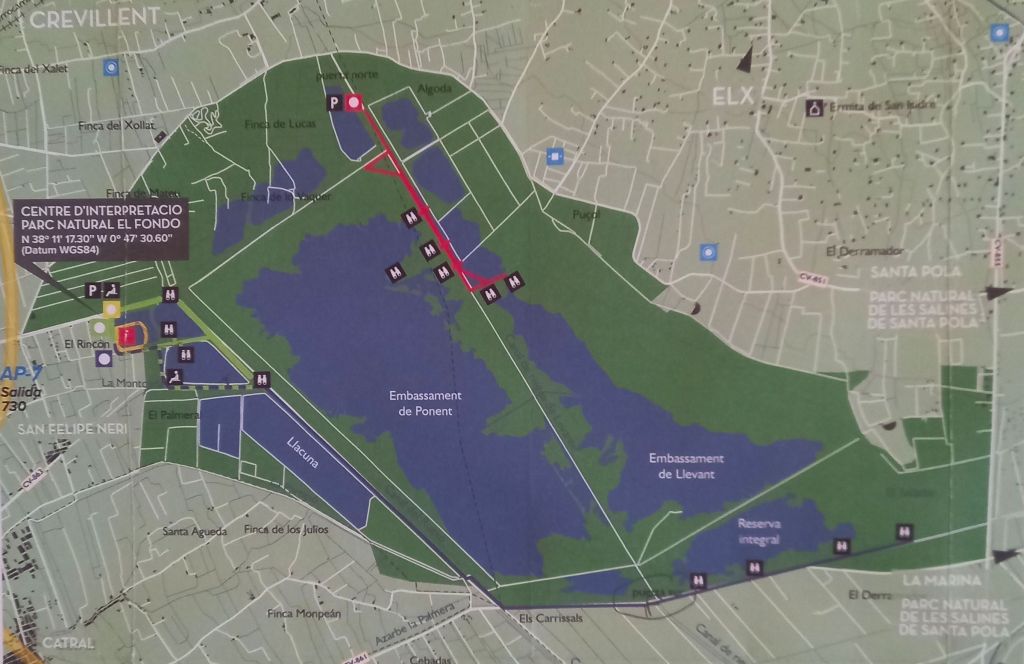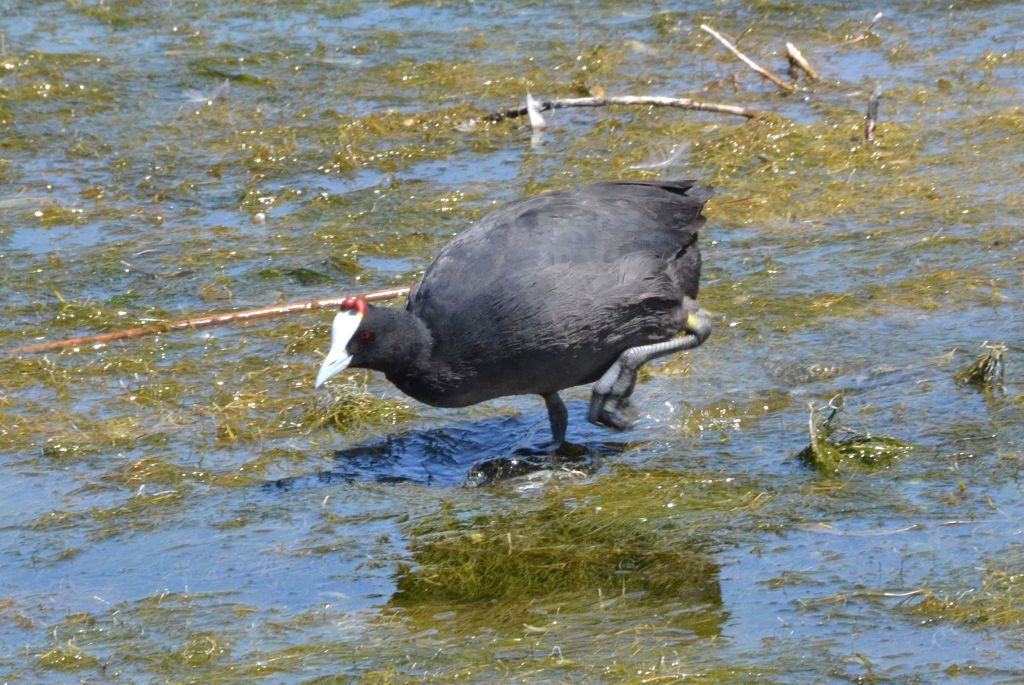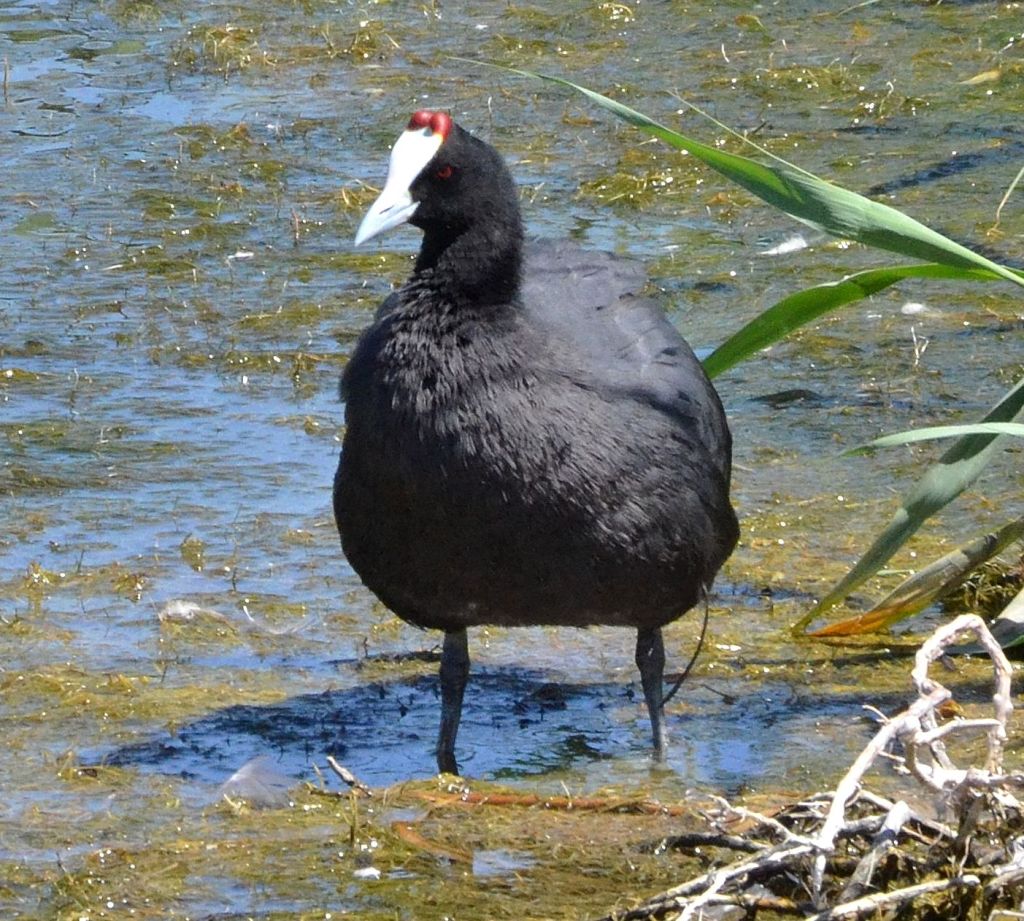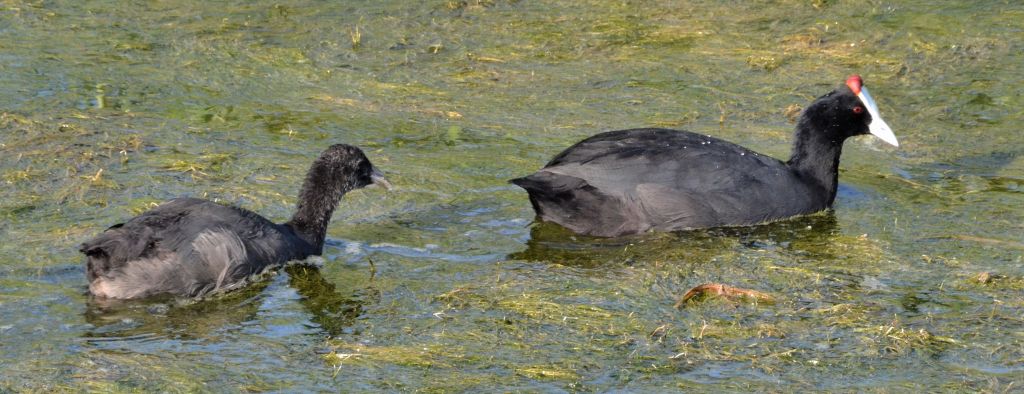Prior to the Covid pandemic there were just four regularly occurring (ie non-vagrant) birds from what I term south-western Europe I had not recorded either there or elsewhere: Western Orphean Warbler, Western Olivaceous Warbler (both fairly recent species splits), Lammergeier (excluding the contentious 2020 touring individual nationally), and Red-knobbed (or Crested) Coot. The last named was a stand-out omission from the excellent tally I self-found through my solo ramblings on the Iberian peninsula in the first half of the previous decade, it being a quite scarce item.
At some time during August I received an email from the wildlife tour operator Greenwings, attempting to fill a late cancellation place on a holiday in the Valencia region of Spain. Looking through the itinerary I had already recorded almost all of the birds, butterflies and dragonflies on it. An exception was Red-knobbed Coot, of which a good number were cited as being resident at a major wetland reserve to the south-west of Alicante. Checking flights and accommodation they were affordable, so I elected to go and attempt to convert the long-time straggler by myself.
Reviving these solo expeditions is not a preferred option but it gets things done, is what I know and have managed quite effectively in the past. After three wildlife seasons without foreign travel I had been feeling stale working through mainly the same species lists over and again at home, and so now feel inclined to do more of this sort of thing once again. Hence the approach of midnight on 6th (Tue) saw me stepping off a delayed Ryanair from Luton at Alicante airport for a three-night stay in nearby Elche. My base was a cheap and cheerful, 3-star hotel on an industrial fringe of that city, and the planned itinerary allowed three full days birding before an evening departure on 9th (Fri).
The Parque Natural de El Hondo (El Fondo Natural Park) is now home to Europe’s most important cluster of Red-knobbed Coot, one of the continent’s rarest breeders. In 2021 the reserve held 30 – 35 individuals, representing the equivalent percentage of the total Spanish population of around 100 birds. A pre-trip unknown would be how difficult or not it might be to locate this must-see lifer. There are four visitor trails at El Fondo – yellow, green, blue (16km) and red (see below) – of which the last is open only by arrangement on Saturdays. The Greenwings group had visited on Saturday 3rd, so I hoped that was not out of necessity to view my own quest.
In the event I need not have been concerned since upon enquiring at the visitor centre on Wednesday morning (7th) I was informed some birds would be viewable along the nearest and shortest (yellow) trail. I could not have imagined how easy it was to connect with the several Red-knobbed Coot here, from and sometimes close to a raised boardwalk through a lagoon adjacent to the visitor centre. There were five breeding pairs at El Fondo in 2021 and I observed three in this one location today.

I remained here all day, walking the shorter yellow and green routes in temperatures in the low thirties. That seemed like a large area to me but the entire natural park is vast. The blue trail running south-east then east is 16 km long and is intended to be a cycling not walking route. By the afternoon I had the place more or less to myself and making several passes of the boardwalk kept encountering the Coots in roughly the same places. On seeing my approach they would often move away but with care I was able to get close enough from time to time to gain the images in this post.
One pair was involved in active nest building (pictured above, top) and I observed a small chick (centre) as well as juveniles (bottom) of various sizes. A particular individual was wearing a somewhat disfiguring collar bearing the letter 05 (below), indicating it was a captive-bred bird that has been released into this group. By comparison with regular Eurasian Coot, RNC has a blue-tinged bill as well as the very distinctive red nodules on the brow. The latter are said to shrink rapidly and become much more difficult to distinguish at distance post-breeding, and I was surprised by how large and prominent the feature appeared today.


There is a rounded not pointed edging to the border between the black feathering and white facial shield in front of the eye (above right), and the wings are pure black without a white rear edge in flight. Red-knobbed is slightly bulkier than Eurasian with longer wings and neck, and is less inclined to keep its head upright, nodding as it moves. The call is also quite different and to me rather resembled the ooo .. ooo .. ooo of a Chimpanzee. This could often be heard when the birds were not actually visible.
RNC has a fragmented global distribution, with the main population in eastern and southern Africa. The much smaller, isolated contingent in the western Mediterranean decreased significantly through the twentieth century. The larger proportion of that is in northern Morocco where the species is locally uncommon and in decline. The Spanish population is classed as endangered, being impacted by territorial reduction of wetlands, invasive competitors and hunting.
The species became extinct in the Region of Valencia in the 1950s and since 1998 has been the subject of a re-introduction scheme developed by the Generalitat Valenciana and the European Union. Four birds were released in 2019 and a further three during the Covid confinement period, all fitted with white PVC collars with black letters such as I observed.


El Fondo Natural Park is formed by a number of lagoons fed by the River Segura and other water courses. Two large reservoirs are man-made with surface areas of 450 and 650 hectares respectively. Constructed in the 1920s prior to which the area had been drained for agriculture, these water bodies are mostly hidden behind extensive reed beds and other marsh vegetation, and surrounded by a complex of ponds and salt marshes all of which constitute a highly bio-diverse landscape. Huge numbers of water birds are resident, amongst which the most noticeable are perhaps Greater Flamingo, Egrets and Herons, Glossy Ibis, wildfowl and waders.
As I lingered alone on 7th without disturbance from other visitors I became aware of several Purple Gallinule on the same lagoon as the Coots. The former were very skittish, mostly heading for cover as soon as they noticed traffic on the boardwalk even quite distantly, and sometimes appearing to run over the water’s surface in a quite comical manner. Their range of calls like squealing pigs would issue from the pond margins when the birds themselves were not visible, blending in the soundscape with the previously mentioned ape-like utterances of the Coots. The park held 18 breeding pairs of PG in 2021.


El Fondo is also home to nationally important clusters of Marbled Duck for which it is the only breeding site on the Iberian peninsula, and White-headed Duck. I encountered each species just once during my three day visit, both on the lagoons nearest to the visitor centre. At the far end of the blue route in the south of the reserve are three hides from which I was advised are the best chances of seeing WHD. I spent some time there on both 8th and 9th but without success. The bird I did observe briefly was an adult winter male.
There is an immense amount of concealed and inaccessible habitat at El Fondo in which those rare breeding wildfowl might need to be located. But my first foreign travel in almost three years, at what became a momentous time at home, left me in no doubt that this is THE place in Europe and the Western Palearctic in which to experience Red-knobbed Coot.






